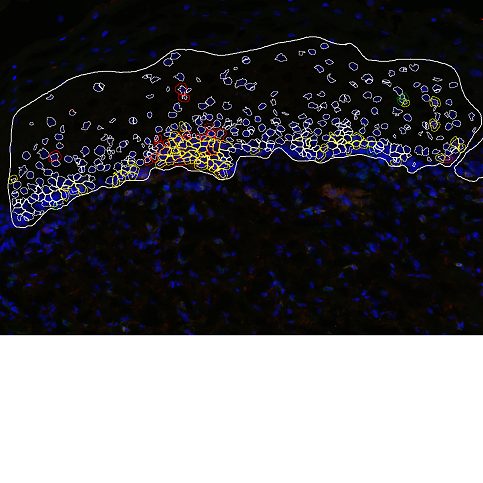Illustration (click to hide):

Project Description
The female genital mucosa presents a comprehensive natural immune defense against HIV infection, although during exposure to a high dose of virus this is not enough to protect the individual against viral transmission. Some individuals have a stronger resistance against HIV than others and therefore it is highly important to investigate which factors that contribute to an effective local protection against sexual infection. The aim of this study is to quantify gene expression in the target cells of HIV in ectocervix, and measure the distance to the vaginal lumen, as well as epithelial thickness. These parameters will be compared in women involved in sex work between the groups of HIV-infected, highly HIV exposed HIV-uninfected that seems to be resistant, and HIV-uninfected women who have been involved in sex work for a short period.
The project led to a joint publication: A. Gibbs, M. Buggert, G. Edfeldt, P. Ranefall, A. Introini, S. Cheuk, E. Martini, L. Eidsmo, T.B. Ball, J. Kimani, R. Kaul, A. Karlsson, C. Wählby, K. Broliden, and A. Tjernlund. HIV-infected women have high numbers of CD103-CD8+ T cells residing close to the basal membrane of the ectocervical epithelium. Journal of Infectious Diseases 2018 Jul 2;218(3):453-465. doi: 10.1093/infdis/jix661
Tags: Microscopy, model organisms and tissues
Project Information
-
BIIF Principal Investigators
- Petter Ranefall
- Carolina Wählby
External Authors
Anna Gibbs, Gabriella Edfeldt, Maria Röhl, Annelie Tjernlund - Dept. of Medicine, KI -
Date
2015-04-01 🠚 2018-12-31